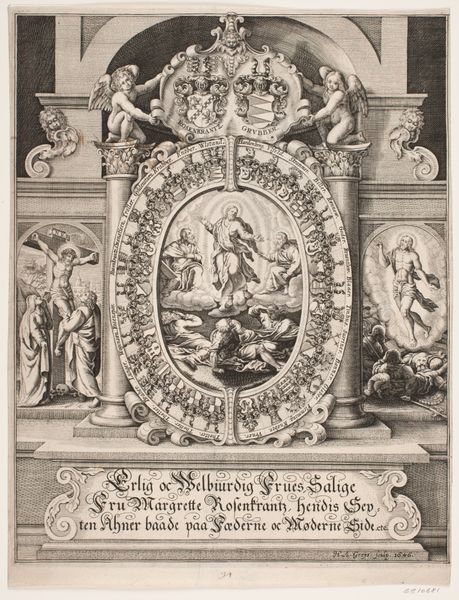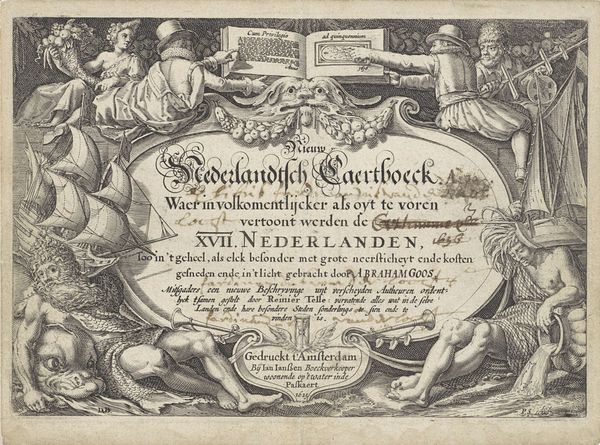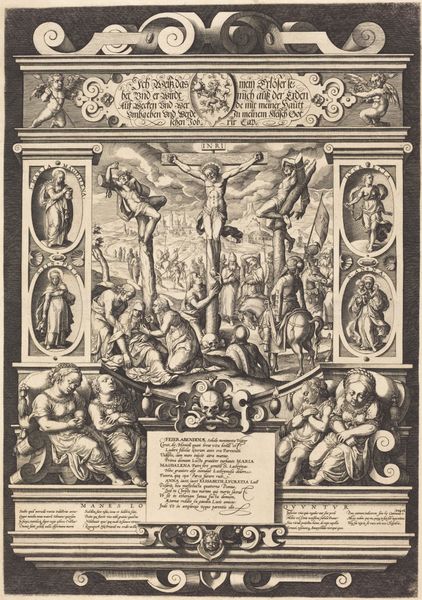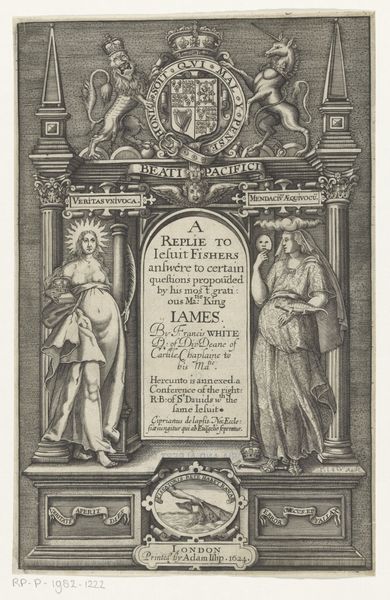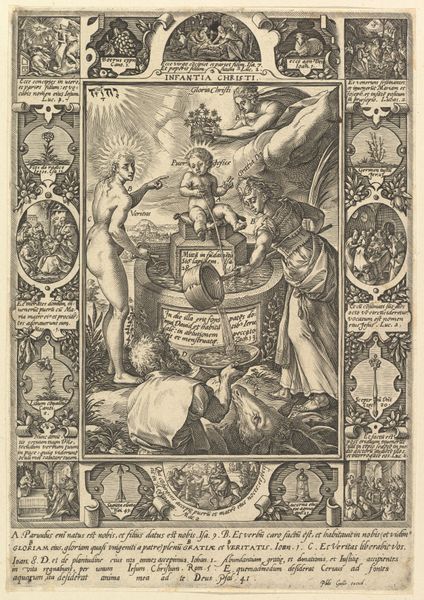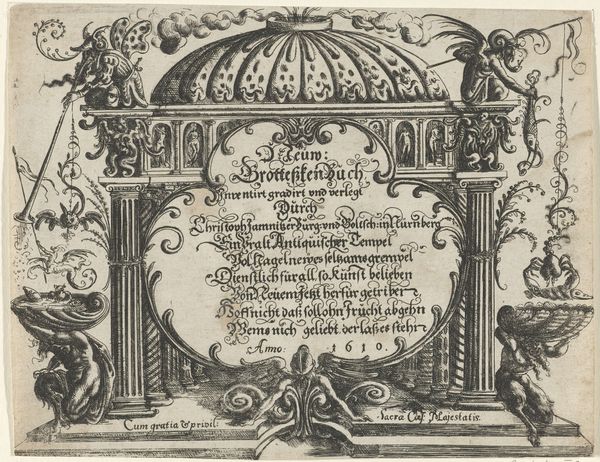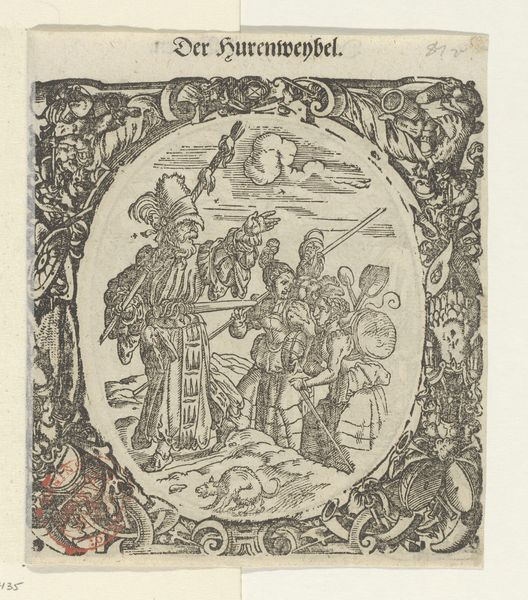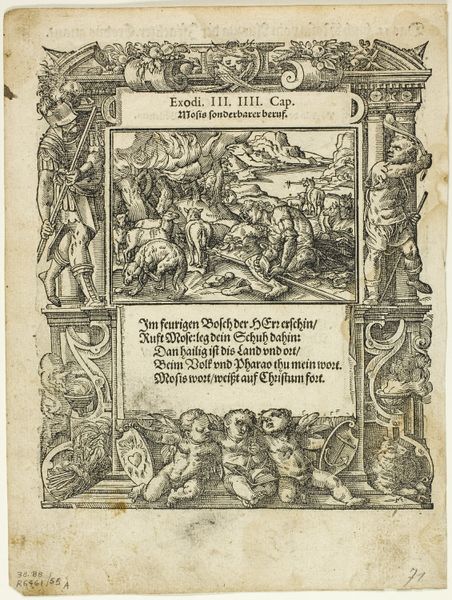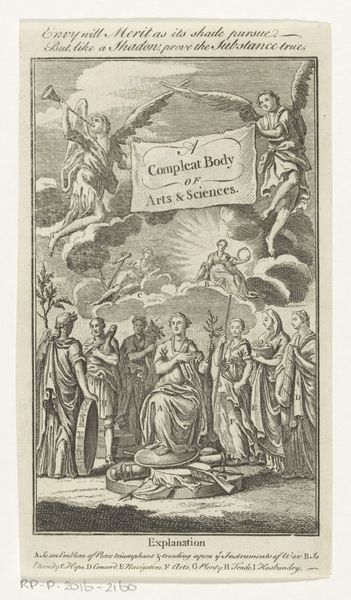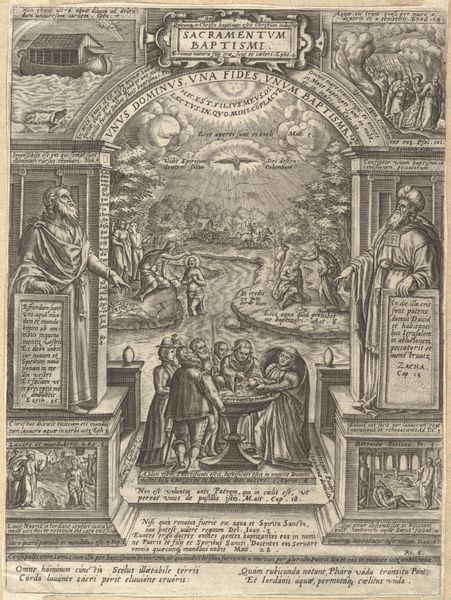
engraving
#
allegory
#
baroque
#
figuration
#
line
#
cityscape
#
history-painting
#
engraving
Dimensions: height 130 mm, width 174 mm
Copyright: Rijks Museum: Open Domain
Curator: Pieter Serwouters created this engraving in 1622, currently held in the Rijksmuseum, titled "Allegorical Representation of Comedy and Tragedy". The baroque artwork bursts with figures and detail. Editor: The immediate impression is one of elaborate, performative mourning. All of these swirling lines, the cherubs, the grim reaper. It feels intensely theatrical. Curator: Observe how the artist orchestrates visual elements to articulate contrast. Note the asymmetrical placement of figures; above, allegories of comedy and tragedy are counter-balanced by an angel, and father time kneeling at the bottom. This asymmetry creates tension. Editor: Yes, and tension seems like the intention! The figures each hold strong symbolic weight; tragedy is there cradling the severed head, while comedy holds the scepter and wreath. But how do we decode the theatricality itself? It's as if we're peering into a dream. Curator: Consider the use of line. See how Serwouters uses fine, parallel lines to create shadow, and how changes in line density suggests shifts in form and depth? The structural foundation supports symbolic complexity. Editor: What does the hourglass carried by Father Time signify? Does it mark a shift from optimism to impending mortality, or does it show both? Time and storytelling working hand-in-hand. The inclusion suggests the transitory nature of performance and life itself. Curator: The formal qualities serve the allegorical intent; the dynamic arrangement guides the viewer's eye through a network of opposing yet complementary ideas: life/death, joy/sorrow. Editor: The engraving leaves you wondering what parts of performance, tragedy or comedy, echo through history. A somber and very complex reminder of mortality, elegantly composed! Curator: A complex visual essay, demonstrating mastery of both form and concept.
Comments
No comments
Be the first to comment and join the conversation on the ultimate creative platform.

